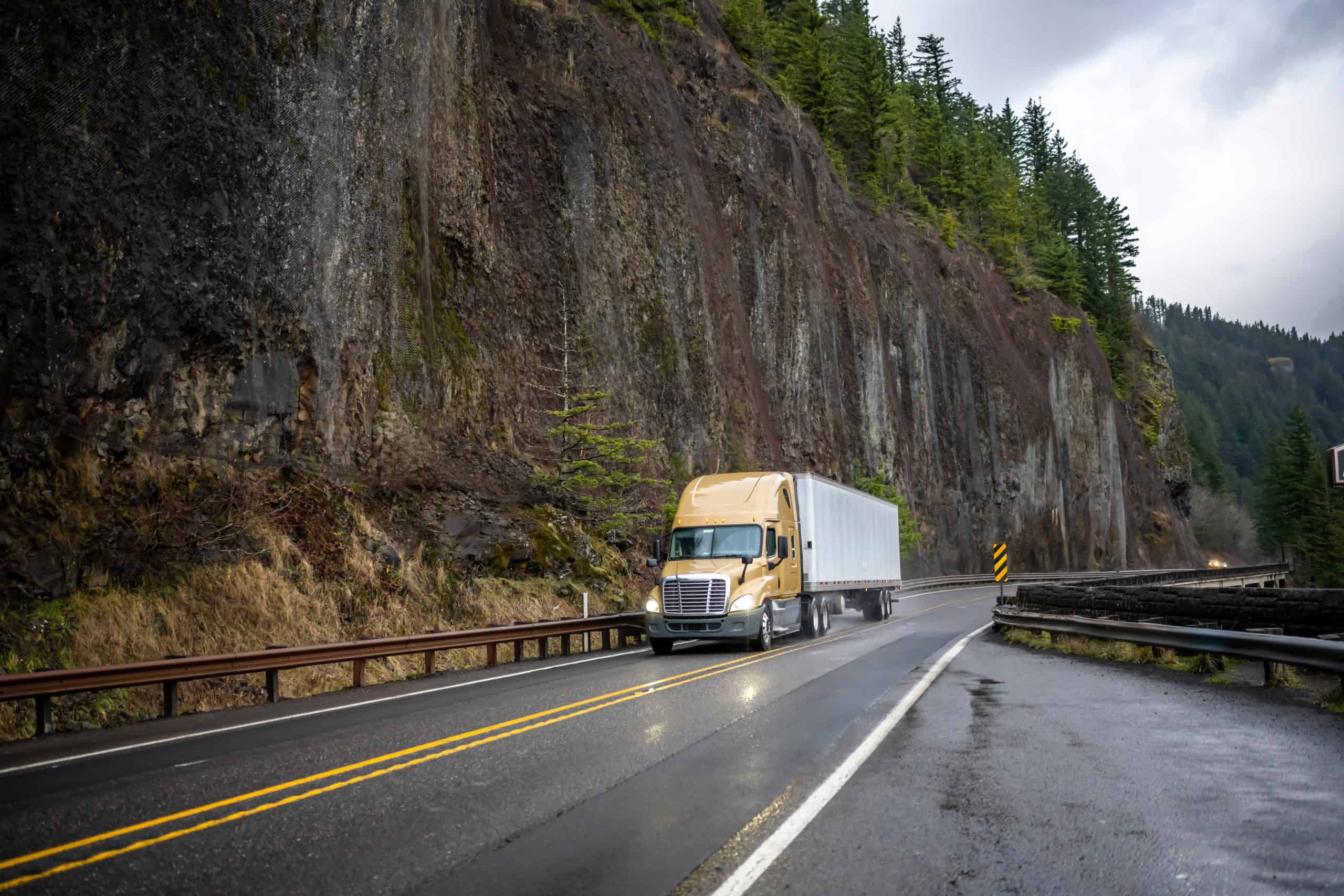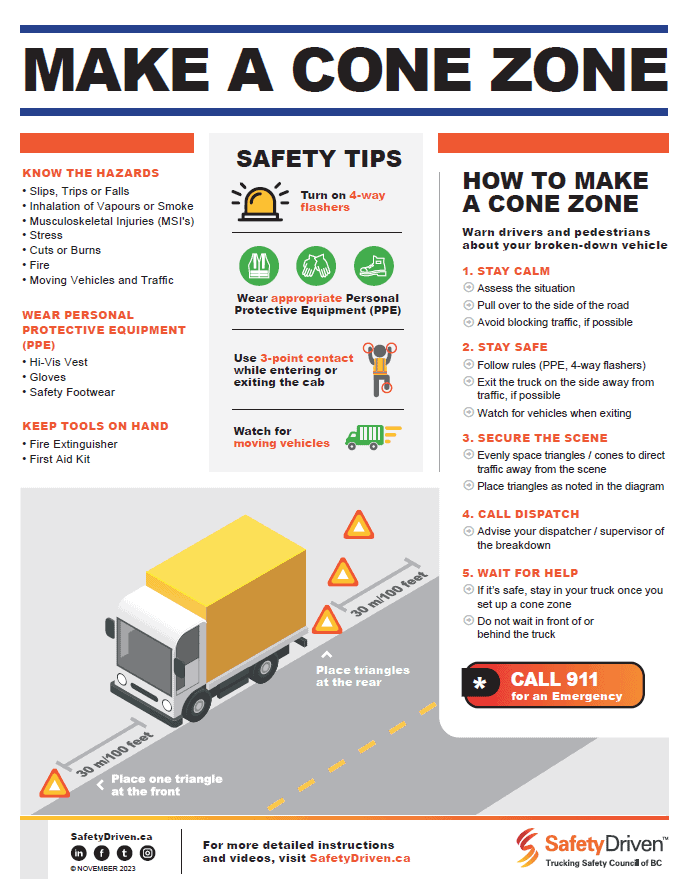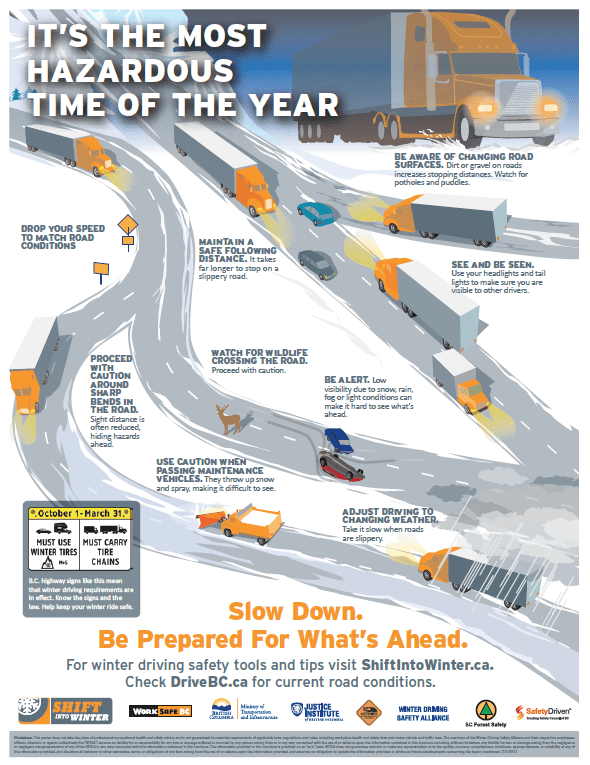
It’s almost fall. Time to change the clock. Time to change your wardrobe. Time to change your driving.
Summer is almost over. Soon it will be fall and the weather can turn pretty quickly. You could be travelling under blue skies and drive right into a storm, especially when you’re heading into the mountains. Are you ready for sudden changes in driving conditions, with fog, ice, slush, fallen leaves, and maybe even snow?
As our days get shorter, vacations are over, and school is back in session, the roads are busier; a reminder of fall driving practices is in order.
Know before you go
Check road and weather conditions often, including road cams and construction zones, at DriveBC or by calling 1-800-550-4997. Get a heads-up on the weather at the points along your route by checking out the forecast from Environment and natural resources.
Look out for leaves
Remember that wet leaves on the roadside can be very slippery. They can even freeze if the temperature drops overnight. Leaves on the roadway can also cover road markings and hide bumps and potholes. This doesn’t just affect tire traction; it also affects footwear.
Prevent slips and falls outside the cab
Be prepared for slippery surfaces when you enter and exit your vehicle or climb up or down on your trailer. Always maintain three-point contact, which means three of your four limbs are always in contact with the vehicle or trailer—two hands and one foot, or two feet and one hand. Falls from (or outside) vehicles are one of the most frequent injuries to commercial drivers.
Stay safe when you have to stop on the roadside
Trucks stopped on the roadside must be as visible as possible so drivers can slow down. This is important all year round, but especially in fall when dusk comes earlier. Drivers approaching at high speed or coming around a corner will have limited time to react to a stopped truck, even in a cone zone. Commercial trucking employers need to ensure that drivers have job-specific training to set up a safe work zone on the side of the road. Drivers need appropriate personal protective equipment, such as high-visibility vests, and trucks need proper safety equipment, including a safety triangle, cones, emergency lights, and flares.
Carry chains and know how to use them
Chaining up is a skill required by new commercial drivers and seasoned drivers new to traversing the high elevations of B.C.’s mountain passes. And even those with plenty of experience with chains can benefit from a refresher.
Employers have a legal duty to provide instruction to employees on how to safely install chains.
The best time to do this is before you need them. BC’s Commercial Vehicle Chain Requirements state that commercial trucks (weighing more than 11,794 kg) must carry chains from October 1 to April 30.
Get ready for changing weather, because winter is on its way!
Latest Resources
Make a Cone Zone
Dowload this poster for tips on how to make a safe cone zone.Winter Hazards Poster
Drivers need to recognize winter hazards. Share this poster to remind drivers how to ...

